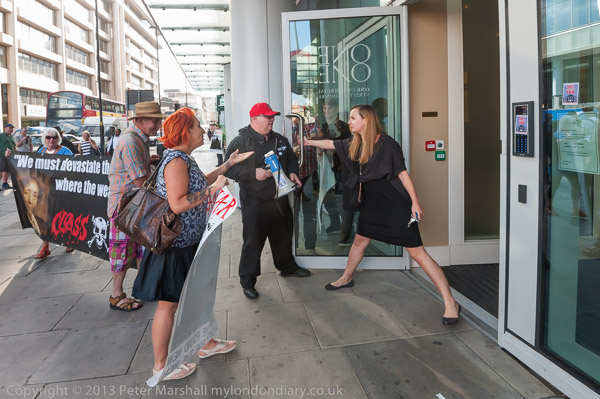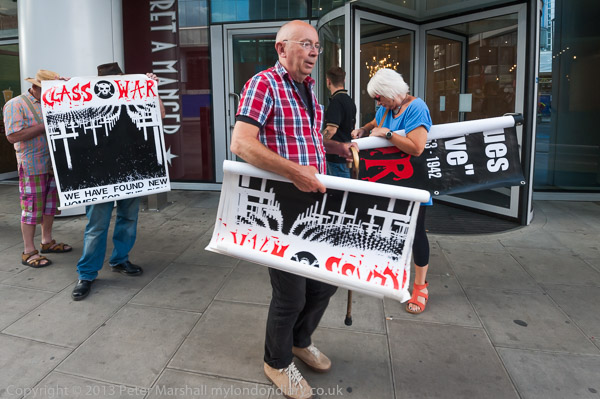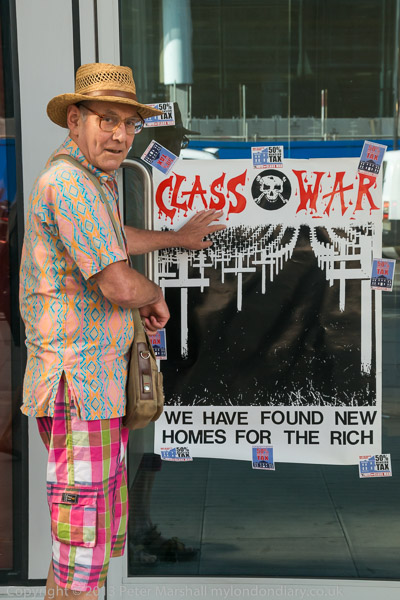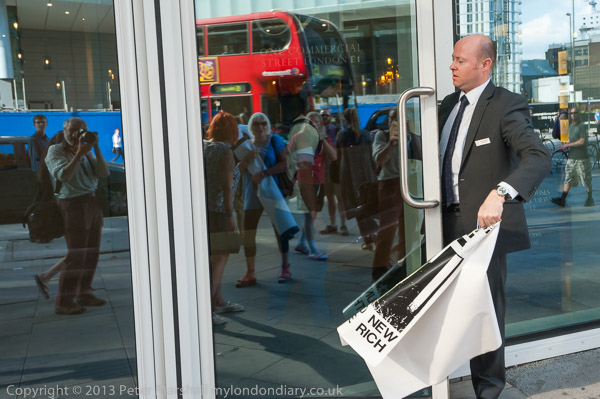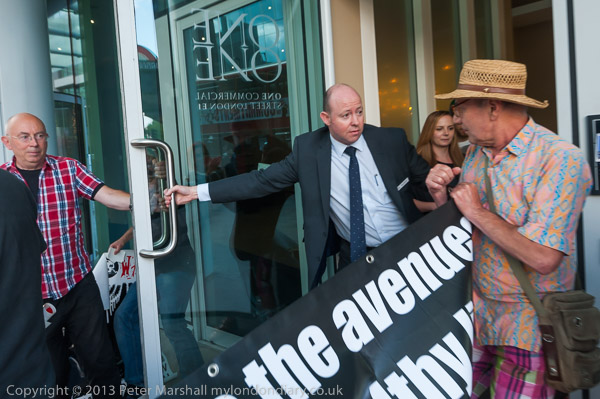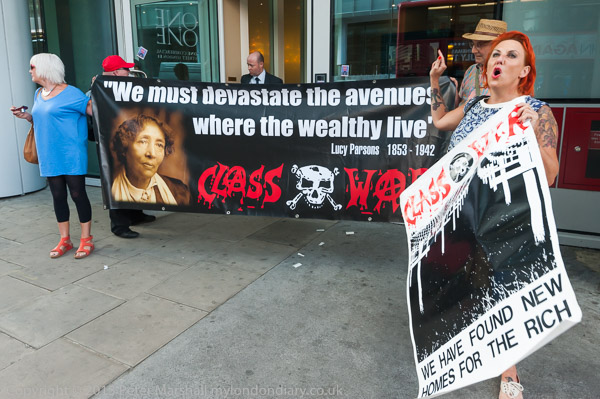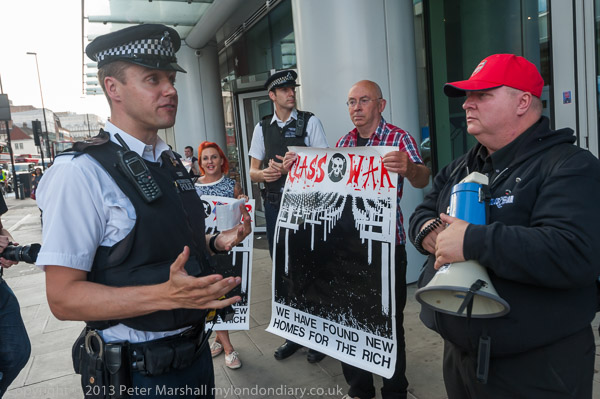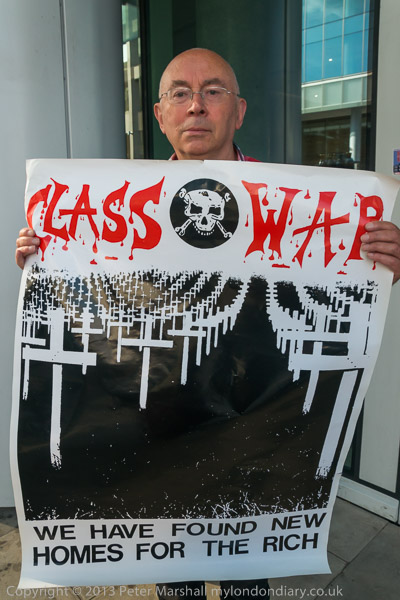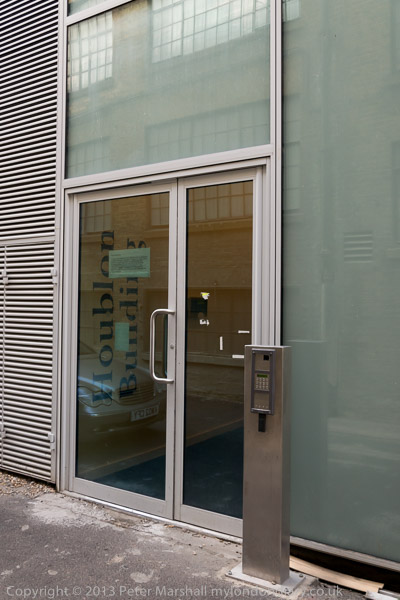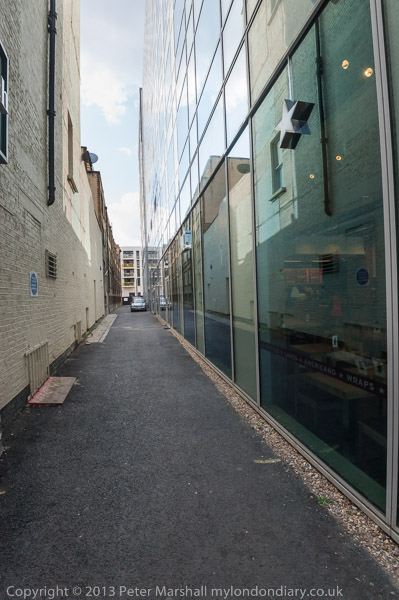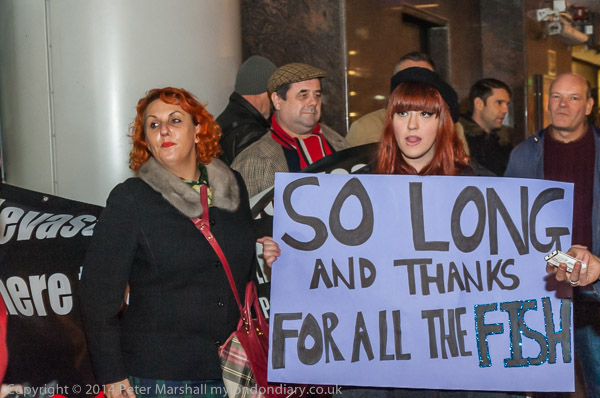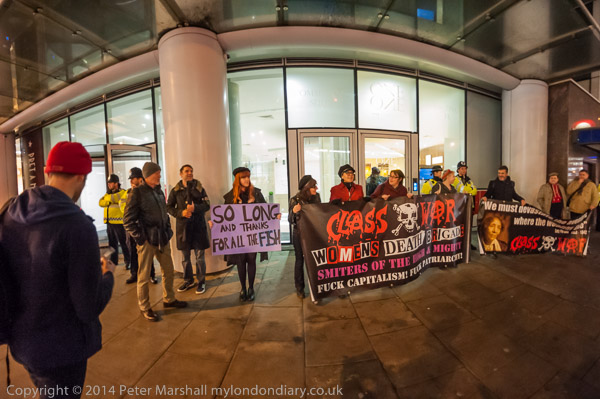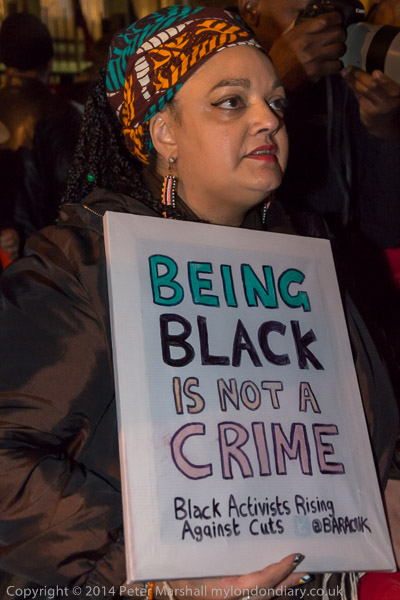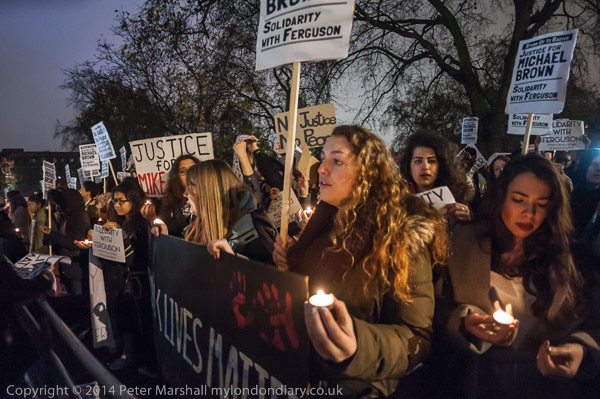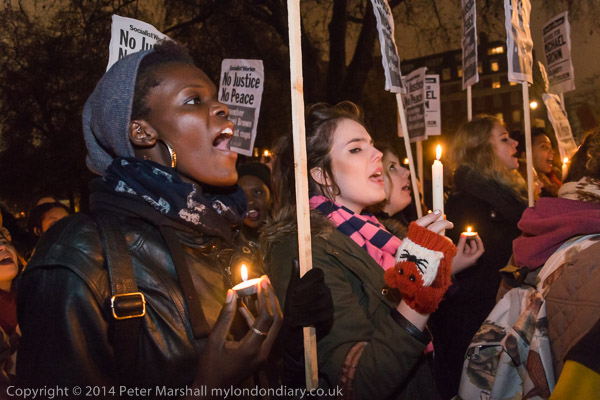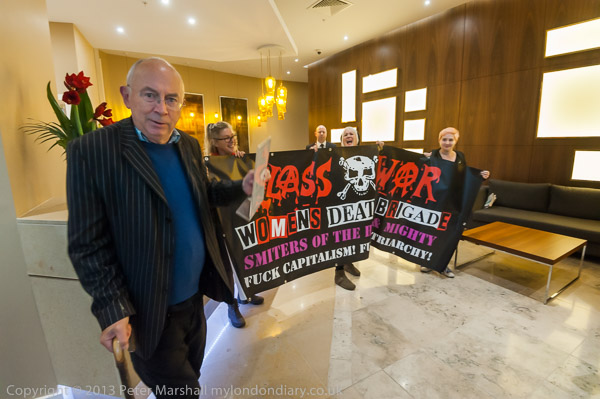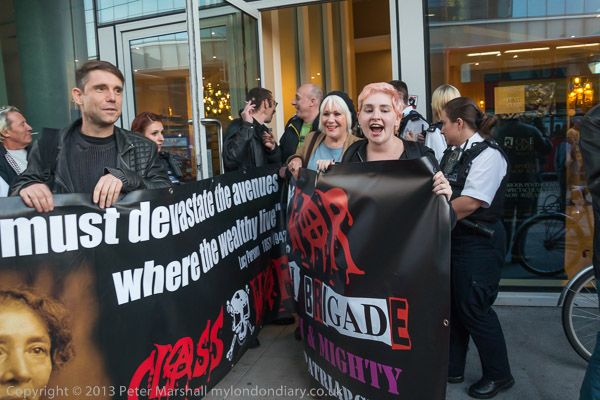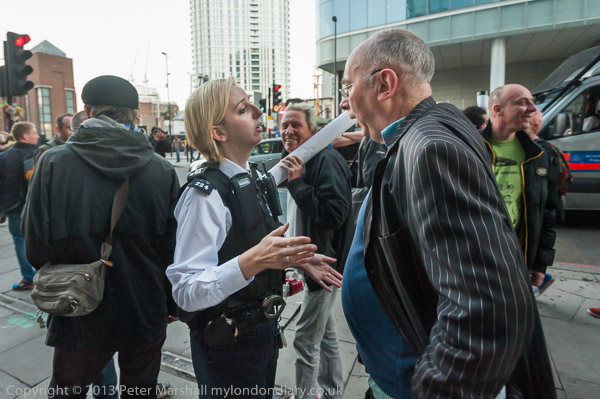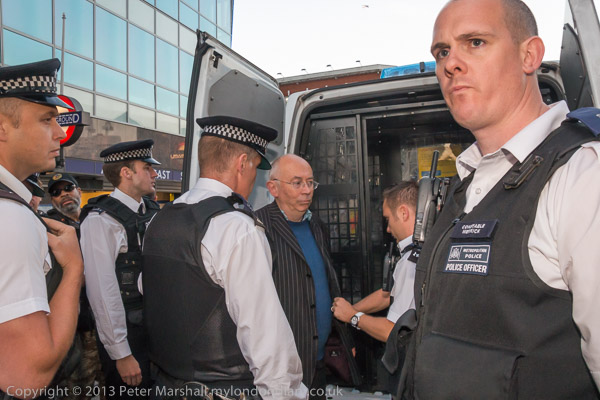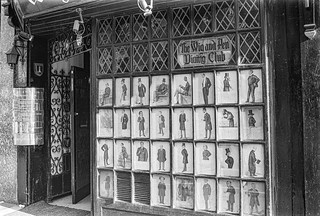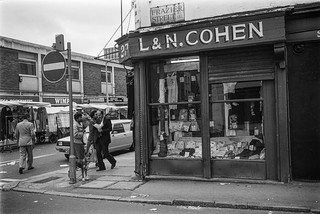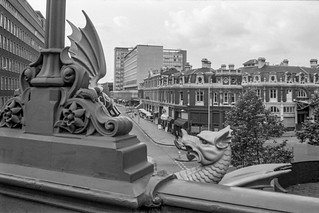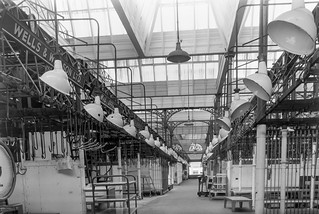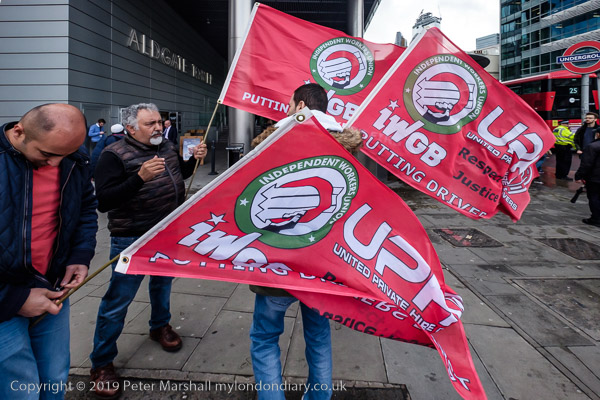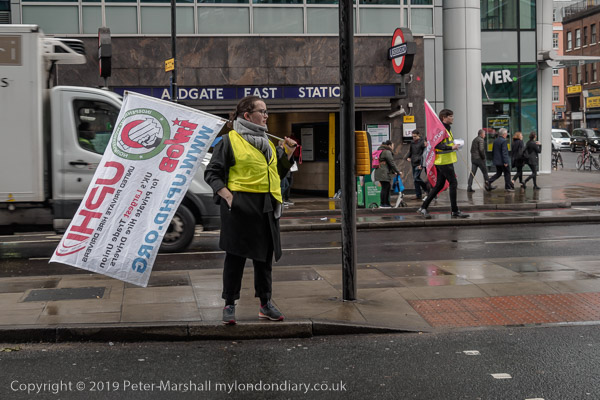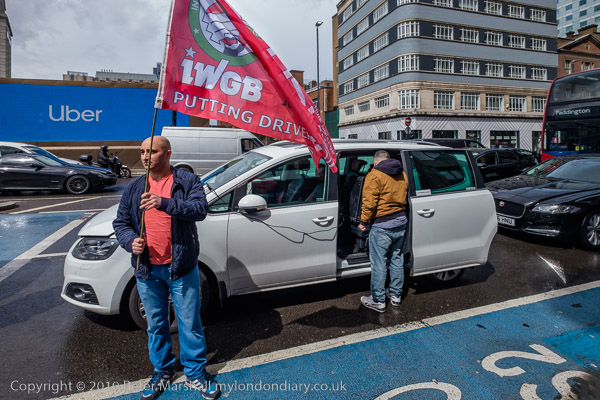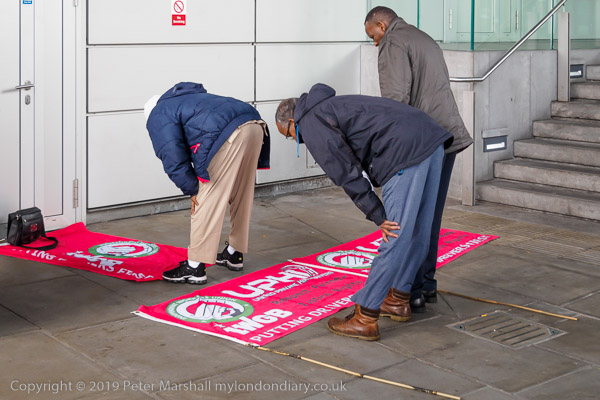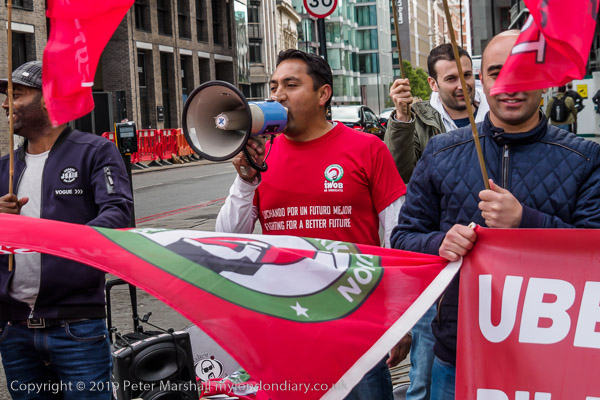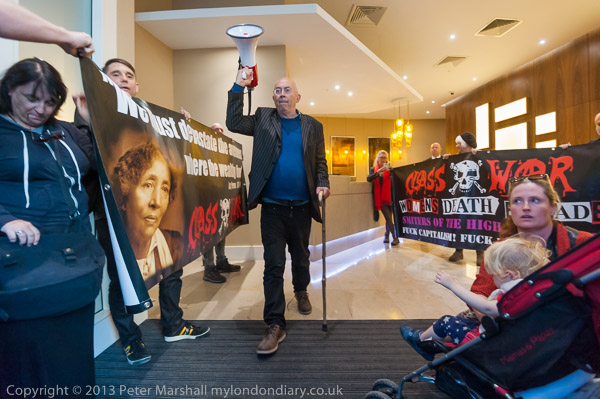
A few days ago I had to sit down and write some explanations to a friend who lives on a smallholding in rural France who doesn’t have a computer or internet access. It made me realise how much has changed for most of us since some time in the 1990s, when we all began to be connected by the World Wide Web and browsers such as Mosaic which really made the breakthrough to something like the web we now know and most of us spend large parts of our life in.

Some time ago I’d sent him a copy of my book – or rather ‘zine’ – ‘Class War: Rich Door, Poor Door‘ I published in 2015:
“A photographic account of the protests from July 2014 to May 2015 at One Commercial St, Aldgate, London against separate doors for rich and poor residents. The book includes over 200 images from 29 protests. ISBN: 978-1-909363-14-4”
It is still available, and at the very reasonable price of £6.00, though given Blurb’s postage rates it only makes sense to buy it if you get together with a few mates to order several copies.

More recently my wife sent him a copy of a postcard with my picture from 2014, ‘Vigil for Ferguson, US Embassy – No Justice, No Peace’ and he wrote back asking who Ferguson was – and included a couple of questions about the Class War book.
Google of course would have supplied him the answers in the twinkling of a mouse click, and told him Ferguson was a town in Missouri where riots had followed both the shooting of Michael Brown by a police officer and the failure to indict the officer for the murder. He could have got the answer even quicker on my own web site, My London Diary, where putting ‘Ferguson’ in the search box at top right on most pages returns links to the Solidarity with Ferguson vigil, Hands Up! Against Racist Police Shootings protest following the shooting and this Candlelit Vigil for Michael Brown following the decision not to charge Darren Wilson with his murder.
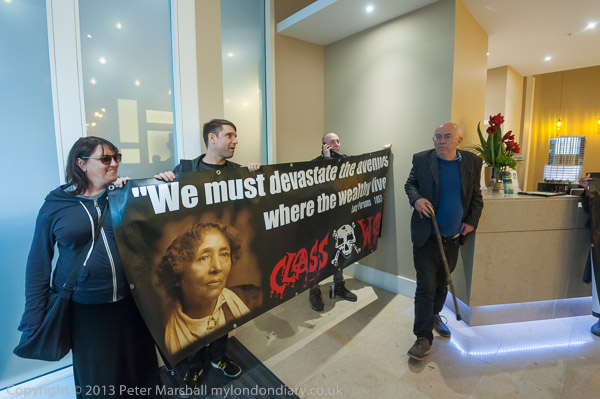
His second question was about the Class War banner with its message “We must devastate the avenues where the wealthy live” Lucy Parsons 1853-1942, and was simply to ask “Who was Lucy Parsons”. Again Wikipedia and other web sites such as the IWW Archive would have given a fast and far more comprehensive answer than the brief reply I wrote.
The final question was one that amused me. “Who, ” he asked, “was that elderly gentleman with a walking stick” and “why was he being arrested and being put into a police van in one of the pictures“. It was of course Ian Bone, and again my web site contains much about him on many occasions, including pictures and an explanation of his arrest on Wednesday 24th September 2014.
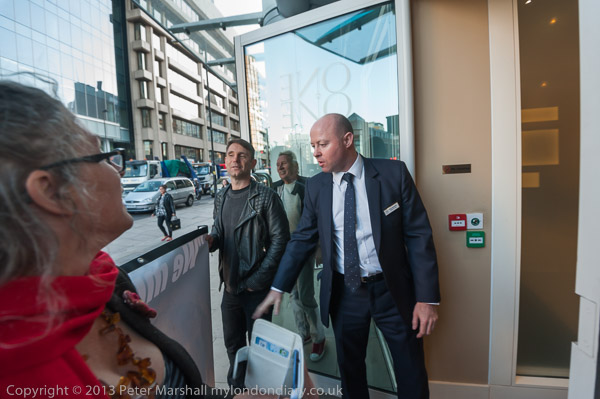
When the building manager had held open the ‘Rich Door’ for a resident to go through, the person holding one end of the Lucy Parsons banner had stepped in front of it to prevent him closing it. He made the mistake of walking away to the concierge desk, probably to ask the concierge to call the police, but leaving the door open and unguarded. So Class War walked in unopposed, bringing two banners with them and continued to protest in the the foyer.
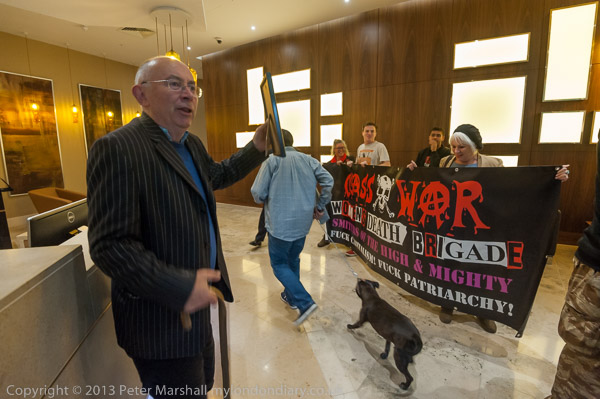
Ian Bone talked to the building manager, then held up a couple of framed notices from the desk, and talked about them and the objections to social tenants being made to use a separate door on a dirty alley at the side of the building, before putting them back carefully on the desk next to a vase full of flowers. Others spoke briefly and people loudly shouted slogans.
And then “there was a crash and the vase of flowers was no longer on the reception desk. Ian Bone had knocked it off with his walking stick, which he had been swinging around rather wildly as he spoke. I only saw it out of the corner of my eye and couldn’t tell if it was deliberate or accidental.” Though I was fairly sure it would have been on purpose.
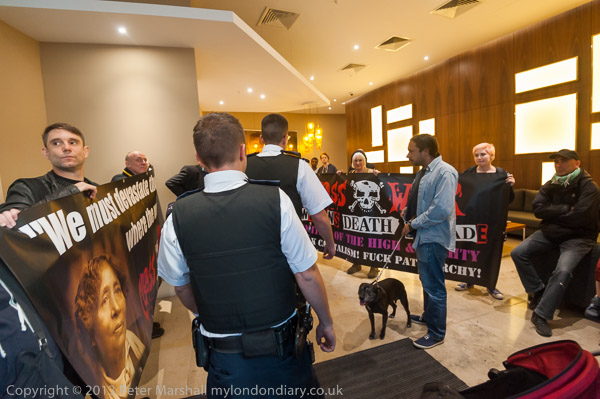
Shortly after, the police arrived, and there was some discussion; I went outside and a few minutes later the protesters followed and the protest continued as usual on the pavement, with more speeches and noise. Eventually the protesters decided it was time to leave and were moving away when a police office approached Ian Bone and told him he was being arrested as the CCTV in the ‘rich door’ foyer showed him breaking the vase. There was considerable argument as he was led away and put in the van, but no attempt at resistance.
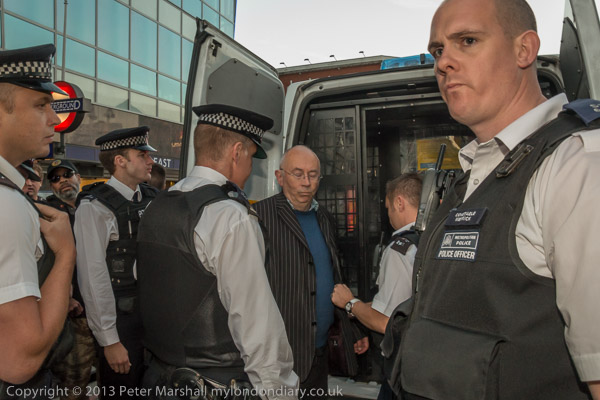
Later we heard that Ian Bone had agreed to pay £70 for a replacement vase and the building owners had decided not to press charges. And at the following week’s Poor Doors protest Class War brought along a couple of vases of flowers to play with and to try and get the building manager to take, though as they probably came from a Pound Shop they “they were perhaps a little plastic and tacky looking compared to the one that had been broken the previous week.”
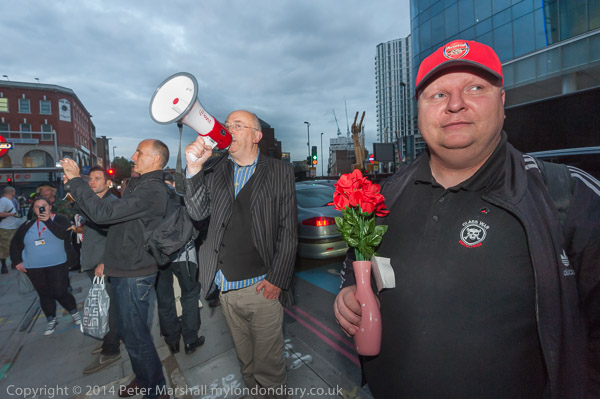
The building manager refused to take the replacements, but later made the mistake of grabbing hold of one which was thrust in his face, “probably by reflex. His face when he found himself holding it was interesting, and he quickly put it down, placing it on the desk in the reception area in the same place as the one knocked off last week, complete with its with a ‘Toffs Out!’ Class War card.” And I was just able to photograph it through the window there on the desk.
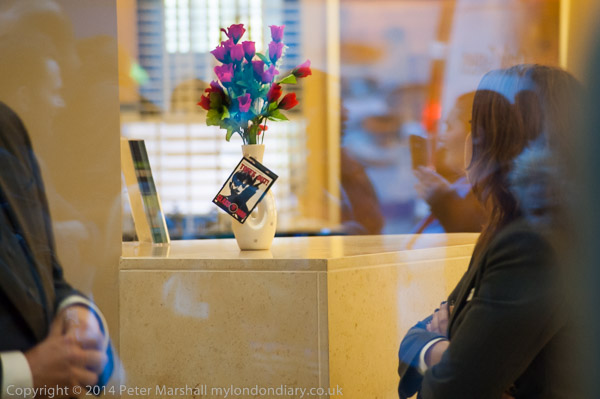
More on My London Diary:
Class War Occupy Rich Door
Class War Poor Doors Week 10
All photographs on this and my other sites, unless otherwise stated, are taken by and copyright of Peter Marshall, and are available for reproduction or can be bought as prints.
